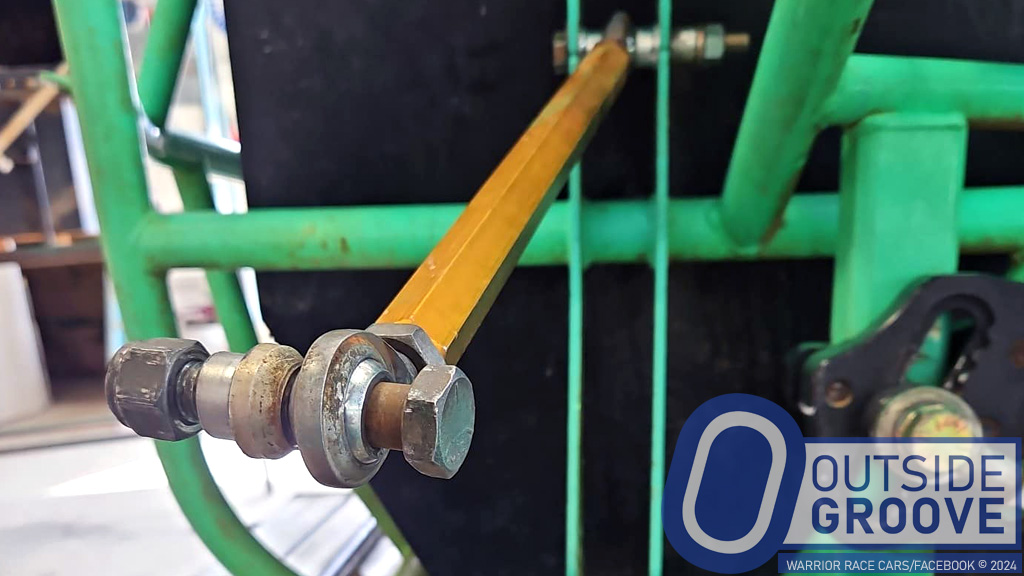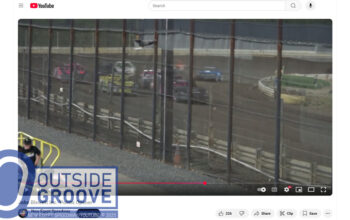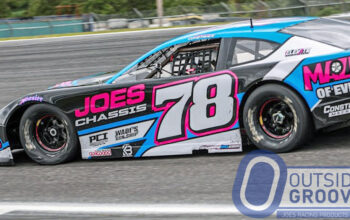If one of your bars stays stuck into position like this, you should address its rod ends if you want to win. Warrior Race Cars’ Mike Nuchols reminded racers to regularly inspect, maintain and, if necessary, replace rod ends on their race cars.
“It has been an ever-occurring problem,” Nuchols said of bound-up rod ends. “One small bind of a rod end can slow down weight transfer, resulting in not putting enough weight on the tire when it should be doing so. Any kind of bind in a race car takes away grip.”
The average late model contains 22 rod ends for the chassis. Add 12 more to that number if you also count the ones on the shocks. All brands of rod ends can bind, regardless of price. Certain conditions increase the likelihood of that occuring.
“It could be as simple as washing the car after racing and letting it sit until the weekend,” said Nuchols. “Water sits in between the monoball and the casing, unable to evaporate, causing them to rust and freeze together by Friday. Track conditions play a factor, as does maintenance of the rod end.”
A rough track transmits heavy loads to the rod end, which can stretch the casing and cause the ball to pull down.
“The stretching causes the ball to bind up, and in this case the rod end has to be replaced,” Nuchols said. “Replacement schedule is subject to conditions and maintenance. If you grab hold of a component attached to a rod end and it has slop or if you have to force it to move, replacement is necessary.”
When compared to many maintenance items, rod ends tend to be at the lower end of the spectrum of cost. Nuchols said most rod ends retail for $15 to $30 apiece.
“Many racers do not stay ahead of the problem — they wait until the issue shows up,” said Nuchols. “The racers that are winning are staying on top of potential rod-end problems. They change every rod end in their car every winter. They take every rod end off of their car after racing and clean and lubricate them.”
To maintain a rod end, Nuchols recommend first cleaning it by hand, wiping away dirt. Then apply a lubricant, such as WD-40 or Tri-Flow, and move the ball around.
“Even rod ends with a PTFE lining will rust up,” Nuchols said. “You still have to remove the water from them by cleaning and lubricating them after racing or washing the car.”
Mike Adaskaveg has written hundreds of stories since the website’s inception. This year marks his 54th year of covering auto racing. Adaskaveg got his start working for track photographer Lloyd Burnham at Connecticut’s Stafford Motor Speedway in 1970. Since then, he’s been a columnist, writer, and photographer, in racing and in mainstream media, for several outlets, including the Journal Inquirer, Boston Herald, Stock Car Racing, and Speedway Illustrated. Among Adaskaveg’s many awards are the 1992 Eastern Motorsport Press Association (EMPA) Ace Lane Photographer of the Year and the 2019 National Motorsports Press Association (NMPA) George Cunningham Writer of the Year.





